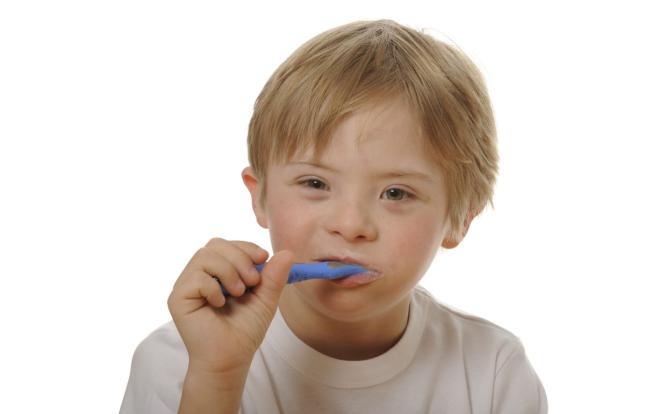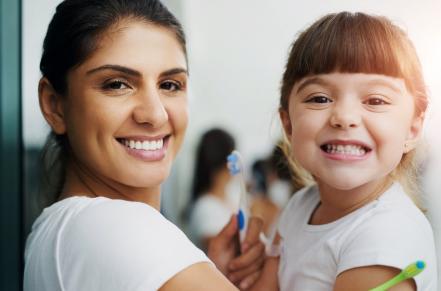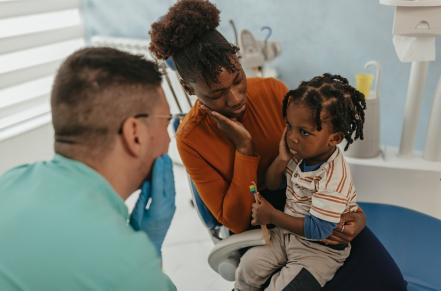Good oral hygiene is important and recommended for children of all ages and from the time their first teeth erupt. Brushing teeth removes plaque, keeps the mouth clean and healthy, and improves a child’s breath and sense of taste. In addition, using toothpaste with fluoride helps fight caries (cavities) while strengthening the tooth. Recent research also shows that regular brushing may help protect your heart from bacterial infection.
What is dental plaque?
Dental plaque is a clear, thin and sticky film composed of bacteria, food debris and salivary components. Plaque accumulates on teeth and is linked with both dental caries and gum disease. Mechanical removal of plaque by brushing is the most effective method of cleaning teeth and preventing gum disease.
Start cleaning teeth early
- Infants. Wipe their gums and teeth with a clean moist cloth after meals and again before bed.
- Toddlers and Preschoolers. Start teaching them to use a toothbrush when they are about 2 years old. Young children want to hold the toothbrush and participate in toothbrushing. Since they do not have enough fine motor control, they need your help.
- School-Age Children. Supervise and help them until age of 8—the age most children acquire fine motor skills such as the ability to tie their shoelaces or completely dress themselves.
Brushing technique
Instruction and supervision are important to establish effective toothbrushing habits in children. Children, like adults, should brush their teeth at least twice a day, preferably after breakfast and before bed at night.
Start by brushing their teeth for them. Place them in your lap with both of you facing the same direction, so that you can see their mouth and they feel secure. Cup their chin in your hand with their head resting against your body, and clean their teeth as you would your own. Try to clean all tooth surfaces—brush at the gumline and then behind the teeth.
Supervise children as they get older. Teach and encourage them to brush their own teeth, but keep in mind that you will need to help them for a few years. Due to their limited fine motor skills, children should scrub their teeth using small circular motions. Teach children to brush lightly (to avoid hurting their gums) and spit out the toothpaste.
Use the right toothbrush and toothpaste
The toothbrush should be soft and child size. For infants, use a brush that is easy for the parent to hold and small enough to fit in the infant’s mouth. For young children, use an appropriate-size toothbrush with a wide handle. For children with special needs and disabilities, a variety of special handles are available to make grasping easier.
Every child should have his or her own toothbrush. Use a tiny smear (pea-size amount) of fluoride toothpaste. Children usually like the taste and may eat the toothpaste, but swallowing too much fluoride can lead to the development of white spots on the teeth (dental fluorosis). Teach children to spit toothpaste out.
When to replace toothbrushes
Replace toothbrushes every three months or more frequently if they show signs of wear, become contaminated through contact with another brush or child, or after a child has an infection. Toothbrushes should be rinsed after each use and air dried. If multiple brushes are stored in the same holder, do not allow them to touch each other.
Resources:
First 5 Oral Health at www.first5oralhealth.org.
California Childcare Health Program at https://cchp.ucsf.edu/.







